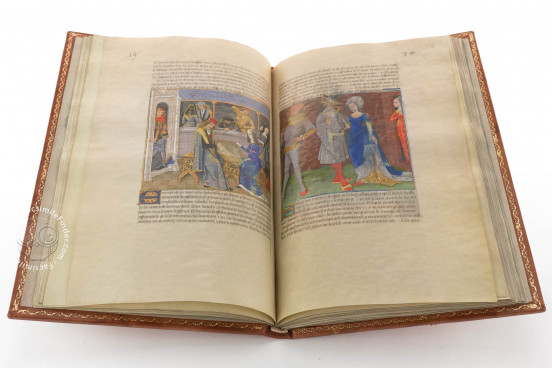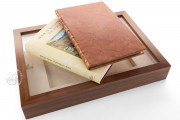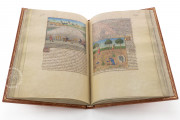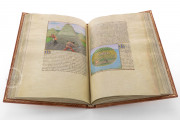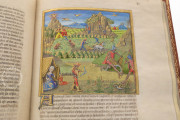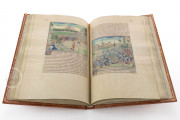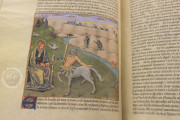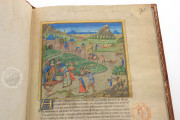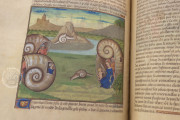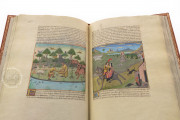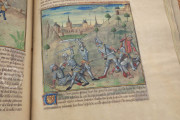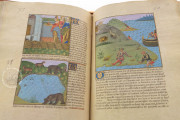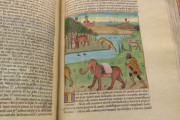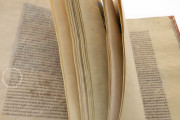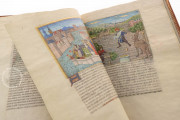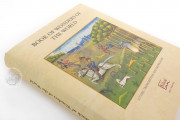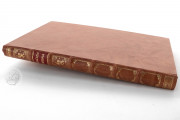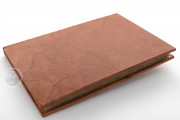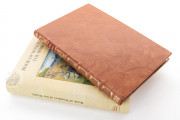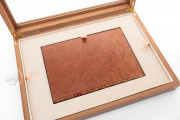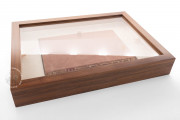The Paris manuscript of the Marvels of the World, painted in Cognac around 1480-1485, is one of the earliest commissions to the illuminator Robinet Testard from Charles, Count of Angoulême. Testard went on to be permanently employed by the count and, after his death, by his widow, Louise of Savoy. The text is an encyclopedic work based in part on ancient texts describing real and imagined "marvels" alphabetically. Testard's illuminations show a wide range of mythological and religious scenes, mythical creatures, exotic animals, and fictional landscapes.
The text abounds with mythological descriptions, serving as a foundation for this captivating visual ensemble.
The Brilliance of French Miniature Art: Robinet Testard and His Legacy
During the mid-15th century, Angers distinguished itself as the most brilliant nucleus of French miniature art. However, toward the century's end, both Angers and many of the most dynamic miniature centers throughout western France experienced significant decline, yielding prominence to Tours, which subsequently dominated artistic production along the Loire. Among western artistic centers, only Poitiers successfully resisted this widespread decay.
It was in Poitiers, amid this uncertain artistic environment, that one of the most original illuminators of the era emerged: Robinet Testard. This extraordinary artist developed his talents in the intellectually stimulating atmosphere of western France around the 1460s, though his earliest attributable works date to approximately the 1470s. This chronology is supported by the 1471 date inscribed at the conclusion of his manuscript of the Great Chronicles of France.
A True Master of French Miniatures
From Testard's Poitiers period, during which he worked independently, we find several dated Books of Hours attributed to him. These manuscripts, now preserved in collections in New York, Brussels, Besançon, and elsewhere, offer clear evidence of his exceptional artistic skill. The same mastery is evident in the precious missal housed in the treasury of Poitiers Cathedral.
These works, among numerous others, earned Testard sufficient renown to attract the attention of Charles of Angoulême, a bibliophile prince of the House of Orléans and father of the future King Francis I of France, who appointed Testard as his chamber painter. This appointment liberated Testard from the insecurity of a declining art market, providing him with a stable position at the Court of Cognac, where he worked tirelessly on commissions for his patrons. His distinctive style—persistently Gothic despite the late 15th-century context—left an indelible mark on all his creations.
The Incredible Recreation of Diverse Scenes
Across the most widely varied contexts, Testard crafted mythological and religious scenes, exotic landscapes, and meticulous botanical illustrations. His commissions extended beyond manuscript illumination; he even received orders to decorate the funeral carriage of the Count.
Following Charles's death, his young widow, Louise of Savoy, retained Testard's services and entrusted him with increasingly ambitious illumination programs. The artist thus shared in the fortunes of his patroness, for whom he continued working until 1510.
Evidence suggests that in 1523, Testard benefited from the generous gifts of the Angoulême heir, Francis I, who was crowned King of France in 1515 and is considered the most emblematic monarch of the French Renaissance. Francis's reign facilitated an exceptional flourishing of the arts in France.
The artist's name appears for the final time in 1531, in records of royal subsidies granted to various members of the recently deceased queen mother's household: "Old Robinet, painter..." received 80 pounds.
The Perfection in Miniature Art
Regarding his artistic approach, Testard was indisputably a singular artist, relatively unconcerned with issues that preoccupied his contemporaries, such as the pursuit of realism and coherent spatial representation according to scientific perspective principles advanced by Italian artists.
His miniatures exhibit impeccable and smooth pictorial execution, with vibrant coloration and stark contrasts that effectively eliminate three-dimensionality. His subtly modeled figures are delineated with near-metallic precision against flat backgrounds reminiscent of theatrical scenery.
For Testard, the priority was not creating the illusion of objective reality but conveying visual messages with maximum efficacy. This explains his emphasis on draftsmanship, stimulated by his discovery of Israel van Meckenem and other German contemporaries. In this respect, the artist aligned himself with the finest tradition of an anti-realist current deeply rooted in both Poitou and Anjou.
The Text at the Service of the Illustrations
The Book of Wonders may represent the earliest commission Testard received upon entering Charles of Angoulême's service. The text, which presents itself as geographical in nature, surveys various countries of the world (in alphabetical order), providing information that is perhaps more fanciful than rigorous, drawing on authorities including the Bible, Pliny the Elder, Solinus—with his De mirabilibus mundi—Isidore of Seville, and other authors.
This heterogeneous compilation likely served primarily as a foundation for the images illustrating its various chapters, as the limited number of extant manuscripts reproducing this text all prioritize illustration, subordinating textual content. It can be convincingly argued that Testard's manuscript represents a complete departure from its predecessors.
The Art in Only Two Dimensions
Throughout the manuscript's 56 fantastical miniatures, we observe the distinctive characteristics that set Testard apart from his contemporaries: simple, flat compositions arranged in stratified levels with horizons that appear deliberately designed to eliminate any suggestion of depth.
Equally remarkable is the clarity of his formal outlines and his restrained approach to modeling. His unwavering pursuit of clarity extends to his color palette, where tonal contrast facilitates legibility and luminous visualization. The tapestry-like effects achieved by virtually eliminating the third dimension complement perfectly the mythical and otherworldly character of the text.
The Harmony of Colors
As is customary in his work, Testard meticulously attends to pictorial execution and demonstrates exceptional skill in creating exquisitely delicate chromatic harmonies. In this regard, one of his most sophisticated miniatures introduces the chapter on Upper Egypt (f. 16v), which the artist evokes through an episode from the life of Saint Paul the Hermit, drawn from the Golden Legend.
The scene is divided into two differently colored zones, separated by the diagonal course of a blue river. In the foreground, Saint Anthony questions a centaur who indicates the path to his reunion with Saint Paul. The figures are set against olive-green terrain that contrasts with adjacent sandy dunes.
We have 1 facsimile edition of the manuscript "Marvels of the World": Libro de las Maravillas del Mundo facsimile edition, published by Siloé, arte y bibliofilia, 2011
Request Info / Price
